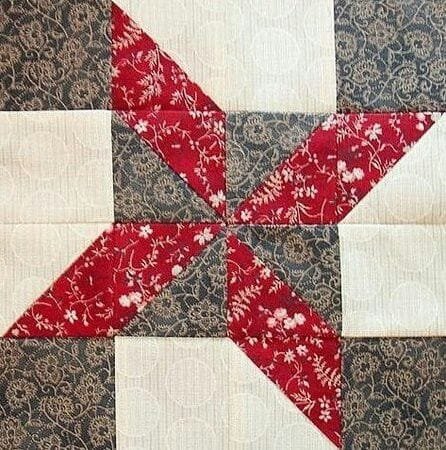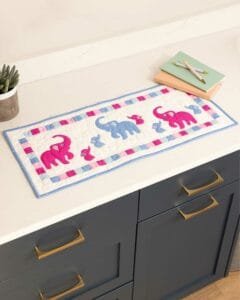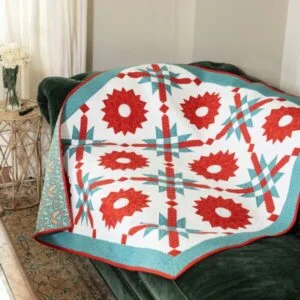If you’re passionate about quilting, you’ve probably come across the Flying Geese Quilt Block – a versatile and iconic block used in many quilt designs. In this tutorial, we’ll walk you through a free pattern that allows you to easily create this timeless block. Whether you’re a seasoned quilter or just starting, this guide will provide all the details you need to master the Flying Geese Quilt Block.
Quilting can be both a relaxing hobby and a way to create beautiful, functional art. The Flying Geese Quilt Block is one of the most adaptable blocks in quilting. It can be used in rows or combined with other blocks to create stunning designs. The simplicity of the pattern allows for endless creativity while remaining manageable even for beginners.
In this free pattern tutorial, we’ll break down each step, provide helpful tips for cutting and assembling your fabric, and ensure you have everything needed to start your next quilting project. Let’s dive into the details of how to make the perfect Flying Geese Quilt Block.

1. What is the Flying Geese Quilt Block?
The Flying Geese Quilt Block is a fundamental design that dates back hundreds of years. Its distinctive triangular shapes mimic the formation of flying geese, hence the name. Typically, one large triangle is placed in the center with two smaller triangles on the sides, creating a striking visual effect.
This block is incredibly versatile. It can be used on its own in rows, or paired with other block types for a more intricate quilt design. Many quilters love using Flying Geese Quilt Blocks in borders or as a feature in star patterns. The possibilities are truly endless.
The Flying Geese block is popular because of its simplicity and flexibility. It can be resized easily, allowing you to customize it for any quilt project. Whether you’re making a small wall hanging or a large bed quilt, the Flying Geese Quilt Block will work perfectly.
For beginners, this block offers an excellent introduction to quilting techniques such as cutting, piecing, and stitching triangles together. Mastering the Flying Geese Quilt Block is a great first step in building more complex quilts.
Experienced quilters also appreciate this block for its ability to add movement and structure to a quilt. The shape’s pointed edges and bold lines naturally draw the eye across the quilt, creating dynamic designs that stand out.
Finally, the Flying Geese Quilt Block can be adapted with different fabrics and colors to create anything from traditional to modern quilt styles. Play with fabric choices to make your project truly unique.
2. Materials Needed for the Flying Geese Quilt Block
Before starting your Flying Geese Quilt Block, it’s important to gather all the necessary materials. Here’s a list of the essentials you’ll need for this tutorial free pattern.
First, choose your fabric. The Flying Geese Quilt Block requires three different pieces of fabric: one large rectangle for the “goose” and two smaller squares for the “wings.” It’s best to pick fabrics that contrast in color or pattern to really make the block pop.
Next, make sure you have a rotary cutter, ruler, and cutting mat. These tools will help you cut your fabric precisely, which is crucial for assembling the block properly. A rotary cutter ensures sharp, clean edges, while a ruler will help you measure accurately.
You’ll also need sewing pins or clips to hold your fabric pieces in place while you sew. This will prevent any shifting and help you maintain straight seams.
A sewing machine is essential for stitching your block together. For the Flying Geese Quilt Block, you’ll need to sew straight seams, so a machine with a straight stitch is all that’s required. Make sure to use a quarter-inch foot for precise seams.
Lastly, have some thread that matches or contrasts with your fabric, depending on the look you want. Many quilters prefer using neutral-colored thread, but a bold, contrasting thread can add a decorative touch to your Flying Geese Quilt Block.
With your materials ready, you’re all set to start cutting and piecing your Flying Geese Quilt Block.
3. Step-by-Step Guide to Making the Flying Geese Quilt Block
Now that you have your materials ready, it’s time to dive into the process of making the Flying Geese Quilt Block. Follow these steps carefully to ensure accuracy.
Start by cutting your fabric. For each Flying Geese Quilt Block, you’ll need one rectangle for the “goose” and two smaller squares for the “wings.” The rectangle should measure twice the width of the square to ensure a perfect fit.
Next, take one of your squares and place it right side down on one corner of the rectangle. The edges should align perfectly. Draw a diagonal line from one corner of the square to the opposite corner. This will be your sewing line.
Sew directly on the line you drew. Once sewn, trim the excess fabric, leaving a quarter-inch seam allowance. Press the seam open to reveal the first half of your Flying Geese Quilt Block.
Repeat the same process with the second square on the opposite corner of the rectangle. Again, draw a diagonal line, sew along it, trim the excess fabric, and press the seam open.
At this point, you should have a perfectly shaped Flying Geese Quilt Block. The large triangle represents the “goose,” while the two smaller triangles on either side represent the “wings.” If everything looks aligned, congratulations—you’ve completed your block!
Repeat the process to create more Flying Geese Quilt Blocks. You can sew them together in rows or mix them with other blocks for your quilt design.
4. Creative Ways to Use the Flying Geese Quilt Block
Once you’ve mastered the basics of the Flying Geese Quilt Block, it’s time to explore creative ways to incorporate this block into your quilting projects. Here are a few ideas.
One popular option is to use Flying Geese in rows. By lining up multiple blocks, you can create a beautiful quilt border or sashing between larger blocks. The continuous triangle shapes will draw the eye and add movement to your quilt.
Another idea is to combine the Flying Geese Quilt Block with other block types. For example, many quilters love pairing it with the Sawtooth Star Block, where the Flying Geese form the star’s points. This combination creates a striking, bold design.
If you’re feeling adventurous, try experimenting with different sizes of Flying Geese Quilt Blocks. By mixing large and small blocks within the same quilt, you can create interesting patterns and textures.
Another creative approach is to use bold, contrasting fabrics for the “wings” and “goose” sections of your block. This will make each triangle stand out and create a modern, eye-catching design.
For a more traditional look, use neutral or muted tones and arrange your Flying Geese Quilt Blocks in symmetrical patterns. This will give your quilt a classic, timeless feel.
Finally, don’t forget to play with different orientations. By rotating the Flying Geese Quilt Block, you can create unique layouts that add variety and interest to your quilt design.
FAQ
1. What size should my fabric pieces be for the Flying Geese Quilt Block?
The standard sizes are one rectangle (2:1 ratio) and two squares. The rectangle should be twice the width of the square for the perfect fit.
2. Can I hand-sew a Flying Geese Quilt Block?
Yes, while most quilters use a sewing machine, hand-sewing is possible. Just ensure your seams are straight and consistent for a clean finish.
3. How do I ensure my points are sharp?
Accuracy in cutting and sewing is key. Make sure your seams are a consistent quarter inch and press your fabric carefully.
4. Can I use scraps for a Flying Geese Quilt Block?
Definitely! Flying Geese Quilt Blocks are perfect for using up fabric scraps, as they require small pieces for the “wings” and “goose.”
5. What types of quilts work best with Flying Geese?
Flying Geese Quilt Blocks are highly versatile and can be used in traditional, modern, and even improvisational quilt designs.
6. Is there a faster method for making Flying Geese Quilt Blocks?
Yes, you can use the “four-at-a-time” method, which allows you to create multiple blocks simultaneously without wasting fabric.
Join our VIP broadcast list and gain access to exclusive patterns, all for free. As a VIP member, you’ll receive the best patterns daily, delivered directly to your device. ✨📱 It’s a unique opportunity to stay up-to-date with the latest trends and designs, curated just for you. Don’t miss out on enhancing your projects and discovering new inspirations with the best patterns every day! 🎨🔝
Conclusion
In this tutorial, we’ve walked through the process of creating a Flying Geese Quilt Block, from understanding its structure to exploring creative uses.
Whether you’re making a simple quilt or a complex pattern, the Flying Geese is a versatile block that can elevate any project. We hope you found this guide helpful and inspiring.
Please share your thoughts and suggestions in the comments below! We’d love to hear from you.



